How long do tires last on a car? Ever thought about the silent soldiers of your car—the tires? Their lifespan isn’t just a number; it’s a reflection of your attention to detail and care.
But here’s a fact that might surprise you: the longevity of your tires can be significantly extended with proper maintenance.
Imagine this: You’re on a road trip, miles away from the nearest service station, and your tire gives out.
Not an ideal scenario, right? That’s why understanding tire maintenance isn’t just about saving money; it’s about ensuring peace of mind during every journey.
Regular rotations, optimal tire pressure, and adequate tread depth might seem like mundane details, but in reality, they are the lifeblood of your tires’ health.
Contents
So next time you get behind the wheel, remember: your tires aren’t just part of your car; they’re part of your driving experience. Treat them well, and they’ll ensure every ride is smooth and safe
Consumer reports recommend using the right tools to properly maintain your tires and keep them in good condition.
How long do tires last on a car? Factors such as regular inspections, maintaining proper tread depth, and following recommended maintenance schedules provided by tire manufacturers play a significant role in extending the lifespan of tires for car owners.
These practices are especially important for ensuring optimal performance and safety in various driving conditions. By taking care of your vehicle’s tires, you can have peace of mind knowing that your wheels are in good condition.
Neglecting these essential practices can lead to premature wear and potential safety hazards for car owners on the road.
It is important for car owners to regularly check and maintain their tires using the right tools to ensure the safety of their vehicles. read on
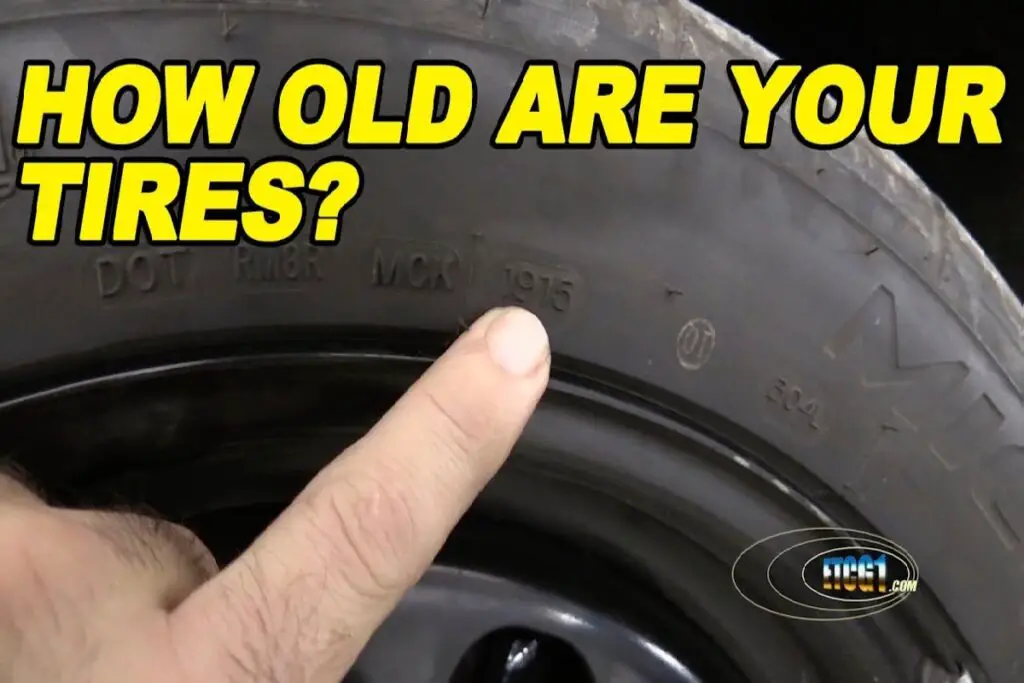
How Long Do Tires Last on a Car?
The lifespan of tires on a car can vary based on several factors, including driving conditions, maintenance, and driving style. However, on average, good-quality all-season tires will last somewhere between three and five years, or about 12,000 to 15,000 miles per year.
This is why it’s important to have the necessary tools for tire maintenance. However, this lifespan can vary depending on several factors.
Different Types of Tires and Their Varying Lifespans
How long do tires last on a car? The type of tire you have on your car can also impact its longevity. All-season tires tend to have a longer lifespan compared to summer or winter tires.
is because all-season tires are designed to perform well in various weather conditions. Summer tires provide better traction in dry and warm conditions, while winter tires offer superior grip on icy or snowy roads but wear out faster due to their softer rubber composition.
Factors That Can Affect the Lifespan of Tires
Several factors can influence how long your tires will last. One crucial factor is proper maintenance and care. Regularly checking car tire pressure and ensuring it’s at the recommended level of between 30 and 45 psi can help extend the lifespan of car tires.
Proper wheel alignment and rotation play a significant role in preventing uneven wear on car tires.
Maintaining tire life is crucial, and regularly checking the average tire tread depth with a tire tread depth gauge can help ensure optimal performance and safety.
Other factors that affect car tire longevity include driving habits, road conditions, and the quality of the tires.
Aggressive driving behaviors like hard braking and quick acceleration can cause excessive wear on the tires. Similarly, rough road surfaces with potholes or debris may lead to premature tire damage.
Importance of Monitoring Tread Depth for Determining Tire Longevity
How long do tires last on a car? Monitoring tread depth is crucial for determining when it’s time to replace your tires. As the tread wears down over time, it affects the tire’s ability to grip the road properly, especially in wet or slippery conditions.
To check tire wear and ensure proper tire maintenance for maximum tire life, you can use a simple method called the “penny test.” Insert a penny into one of the grooves with Lincoln’s head upside down to determine the tread depth of your average tire.
If you can see the top of Lincoln’s head, it’s time to replace your tires. Regular tire maintenance and monitoring tread depth are essential for ensuring your tires last as long as possible.
By taking proper care of your tires and being mindful of the factors that can affect their lifespan, you can maximize their performance and keep yourself safe on the road.
Factors Affecting Tire Lifespan
The way you drive can have a significant impact on how long your tires last. Aggressive driving, as mentioned above, such as sudden braking or accelerating, can cause excessive wear on the tires.
Constantly taking sharp turns at high speeds can also lead to premature tire deterioration. On the other hand, maintaining a steady speed and practicing smooth acceleration and braking can help extend the lifespan of your tires while also keeping your wallet stress-free.
Road Conditions and How They Can Affect Tire Durability
How long do tires last on a car? The condition of the roads you frequently drive on plays a crucial role in determining how long your tires will last.
Rough or poorly maintained roads with potholes, debris, or uneven surfaces can cause accelerated tread wear, impacting proper tire maintenance and shortening tire life.
It’s important to be mindful of road conditions and avoid driving over obstacles whenever possible to preserve your tire’s longevity.

Climate and Its Influence on Tire Longevity
Different weather conditions can impact tire lifespan. Extreme heat can accelerate tire wear, causing the rubber to deteriorate faster and leading to decreased tread life.
Similarly, cold temperatures can affect tire life by making the rubber harder and less flexible, reducing traction, and increasing wear.
It is important to regularly check tire tread depth using a tire tread depth gauge to ensure optimal performance and safety. It’s essential to consider the climate you live in when choosing tires and adjust your driving habits accordingly.
The Significance of Proper Inflation Levels in Extending Tire Life
Maintaining proper tire inflation levels is crucial for extending their lifespan. Underinflated tires create excess friction between the rubber and the road surface, resulting in increased heat buildup and accelerated wear.
Overinflated tires, on the other hand, may lead to uneven tread wear in the center of the tire. Regularly checking your tire pressure and keeping it within the manufacturer’s recommended range is vital for maximizing tire longevity.
By understanding these factors that affect tire lifespan—driving habits, road conditions, climate influences, and proper inflation levels—you’ll be better equipped to take care of your car’s tires and ensure they last as long as possible.
Estimating Tire Lifespan: Kilometers vs. Miles
There are two common units of measurement for tire tread depth gauges: kilometers and miles. Kilometers (km) are used in many countries around the world, while miles (mi) are primarily used in the United States.
The main difference between these two units is the distance they represent. One kilometer is equal to approximately 0.62 miles.
Conversion Factors for Accuracy
How long do tires last on a car? To accurately estimate tire lifespan, it’s important to understand how to convert between kilometers and miles.
If you have a mileage-based tire warranty or want to compare your tire’s longevity with others, you’ll need to convert between these units. Here are some conversion factors to help you out:
- To convert kilometers to miles, multiply the number of kilometers by 0.62.
- To convert miles to kilometers, divide the number of miles by 0.62.
Benefits and Drawbacks
Using different units for measuring tire life has its own benefits and drawbacks.
- Kilometers: Using kilometers allows for easier comparison when purchasing tires or assessing warranties since many manufacturers provide kilometer-based warranties.
- Miles: On the other hand, using miles can be more convenient if you live in a country where this unit is commonly used.
It’s essential to keep in mind that tire lifespan depends on various factors such as driving habits, road conditions, and maintenance practices rather than just the unit of measurement.
Penny Test
One way to check if your tires need replacing is by performing the penny test. Take a penny and insert it into one of the tread grooves with Lincoln’s head facing downward. If you can see all of Lincoln’s head, it might be time for new tires.
How To Extend the Life of Your Car’s Tires
To ensure your car’s tires last as long as possible, there are a few key factors to keep in mind. Regular rotation is essential for promoting even tread wear. Proper alignment plays a crucial role in prolonging tire life.
Maintaining optimal inflation levels is also important, and careful driving techniques can help preserve your tires.
Importance of Regular Rotation
Regularly rotating your car’s tires helps distribute the wear evenly across all four wheels. This means that each tire will experience similar levels of wear and tear over time.
By avoiding excessive wear on one specific tire, you can extend the overall lifespan of your tires.
Proper Alignment Matters
Having proper alignment ensures that your car’s wheels are correctly positioned. When your wheels are aligned, they roll smoothly and evenly, reducing unnecessary strain on the tires.
This helps prevent uneven wear patterns and extends the life of your tires.
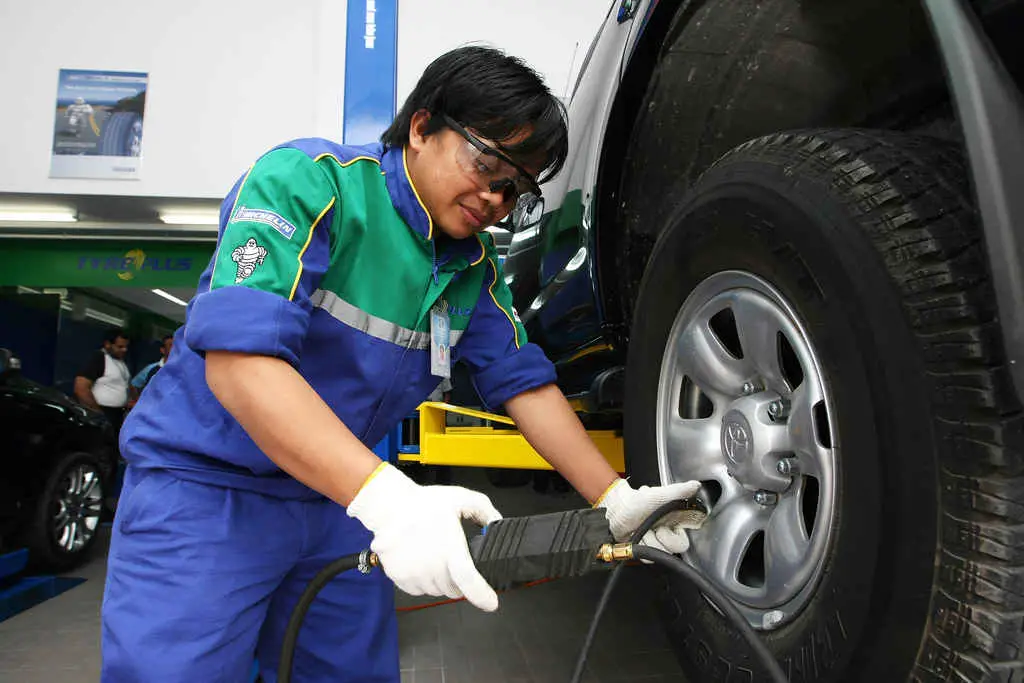
Tips for Maintaining Optimal Inflation Levels
Keeping your tires properly inflated is crucial for their longevity. Underinflated tires can lead to increased friction and heat buildup, which accelerates wear.
On the other hand, overinflated tires may cause uneven tread wear in the center of the tire. Regularly check and maintain proper tire pressure according to your vehicle’s manufacturer’s recommendations.
The Role of Careful Driving Techniques
Your driving habits play a significant role in preserving the lifespan of your car’s tires. Avoid aggressive acceleration or sudden braking, as these actions put extra stress on the tires.
Smooth acceleration and gradual braking not only contribute to better fuel efficiency but also reduce unnecessary strain on the tires.
By following these tips for tire maintenance, you can extend the life of your car’s tires and save money in the long run.
Signs: It’s Time for New Tires
As tires age and endure countless miles on the road, their tread gradually wears down. One of the key indicators that it may be time for new tires is when the tread depth reaches an unsafe level.
You can check this by using a simple penny test: insert a penny into the tire’s tread with Lincoln’s head facing down. If you can see the top of Lincoln’s head, it means your tire treads are too shallow and need replacement.
Indicators of nearing the end of tire lifespan
How long do tires last on a car? Apart from tread wear, there are other signs that your tires may be nearing the end of their lifespan.
These include uneven wear patterns, such as excessive wear on one side or in the center of the tire. If you notice frequent punctures or bulges on your tires, it could be a sign that they need to be replaced.
The importance of inspecting sidewalls for damage or aging
Inspecting your tire sidewalls is crucial to determining whether they need to be replaced. Look out for any cracks, cuts, or bulges on the sidewalls, as these can lead to blowouts while driving.
Aging can also affect tire sidewalls, so keep an eye out for any signs of dry rot or deterioration.
Considering tire replacement due to age
Even if your tires have sufficient tread depth and show no signs of damage, it’s essential to consider their age. As rubber ages, it becomes less flexible and more prone to failure.
Most experts recommend replacing tires that are six years of age or older, regardless of their remaining tread depth.
By being aware of these signs and regularly inspecting your tires’ condition, you can ensure that they are always in top shape and provide optimal performance while driving.
Compare Seasonal Tires
All-season tires are designed to provide a balance between performance and versatility. They are suitable for various weather conditions, including dry, wet, and light snowy roads.
The benefits of all-season tires include:
- Convenience: With all-season tires, you don’t have to switch between different sets of tires as the seasons change.
- Versatility: These tires perform well in different weather conditions, making them a popular choice for many drivers.
However, there are some drawbacks to consider:
- Limited Performance: All-season tires may not excel in extreme winter or summer conditions compared to specialized seasonal tires.
- Compromised Traction: The tread pattern of all-season tires is designed to provide decent traction in various conditions but may not offer optimal grip on icy or snowy surfaces.
Advantages Specific to Winter/Snow Tires
Winter or snow tires are specifically engineered for cold temperatures and snowy or icy road conditions. Here are their advantages:
- Superior Traction: Winter tires have deeper treads with special patterns that enhance grip on slippery surfaces.
- Enhanced Braking and Handling: These tires improve braking distances and handling performance on icy or snow-covered roads.
Performance Differences Between Summer and Performance Tires
Summer or performance tires prioritize high-performance driving in warm weather conditions. Key advantages include:
- Excellent Grip: Summer/performance tires have specialized rubber compounds that deliver superior traction on dry pavement.
- Enhanced Cornering Stability: These tires offer precise handling and improved cornering stability during spirited driving.
Choosing the Right Seasonal Tires Based on Your Climate and Driving Needs
When selecting seasonal tires, it’s important to consider your climate and driving preferences. For example:
- If you live in an area with harsh winters and frequently encounter heavy snowfall, dedicated winter/snow tires would be the best choice.
- In regions with mild winters but hot summers, all-season or summer/performance tires might be more suitable.
Remember to consult with a tire professional who can offer personalized recommendations based on your specific driving needs and the climate you experience.
Choosing the Right Tires for Longevity
How long do tires last on a car? There are several important factors to consider. First and foremost is the tire’s tread life, or how long it can last before needing replacement.
This can vary depending on the type of tire and its intended use. For example, high-performance tires may have a shorter lifespan compared to all-season or touring tires.
Another factor to consider is the tire’s traction rating, which indicates how well it performs in different weather conditions.
Tires with a higher traction rating tend to have better grip on wet or snowy roads, but they may wear out more quickly.
Understanding Tire Ratings and Their Impact on Lifespan
Tire ratings provide valuable information about their performance and durability. The Uniform Tire Quality Grading (UTQG) system assigns ratings for treadwear, traction, and temperature resistance.
The treadwear rating indicates how long the tire is expected to last compared to a reference tire.
Paying attention to load capacity and speed rating is crucial when selecting tires for longevity.
Load capacity refers to the maximum weight a tire can safely carry, while speed rating indicates the maximum speed at which a tire can perform effectively.
The Role of Tire Manufacturers in Determining Durability
Tire manufacturers play an essential role in determining the durability of their products. Reputable brands invest in research and development processes to create high-quality tires with longer lifespans.
They utilize advanced materials, innovative tread designs, and manufacturing techniques that enhance durability and overall performance.
It’s important to do some research and read reviews about different tire manufacturers before making a purchase decision. This will help you identify brands known for producing long-lasting tires that meet your specific needs.
Balancing Cost and Quality When Choosing Long-Lasting Tires
While everyone wants durable tires, it’s also important to consider the cost-quality balance. Higher-quality tires tend to have a longer lifespan but may come with a higher price tag.
However, investing in better-quality tires can save you money in the long run by reducing the frequency of replacements.
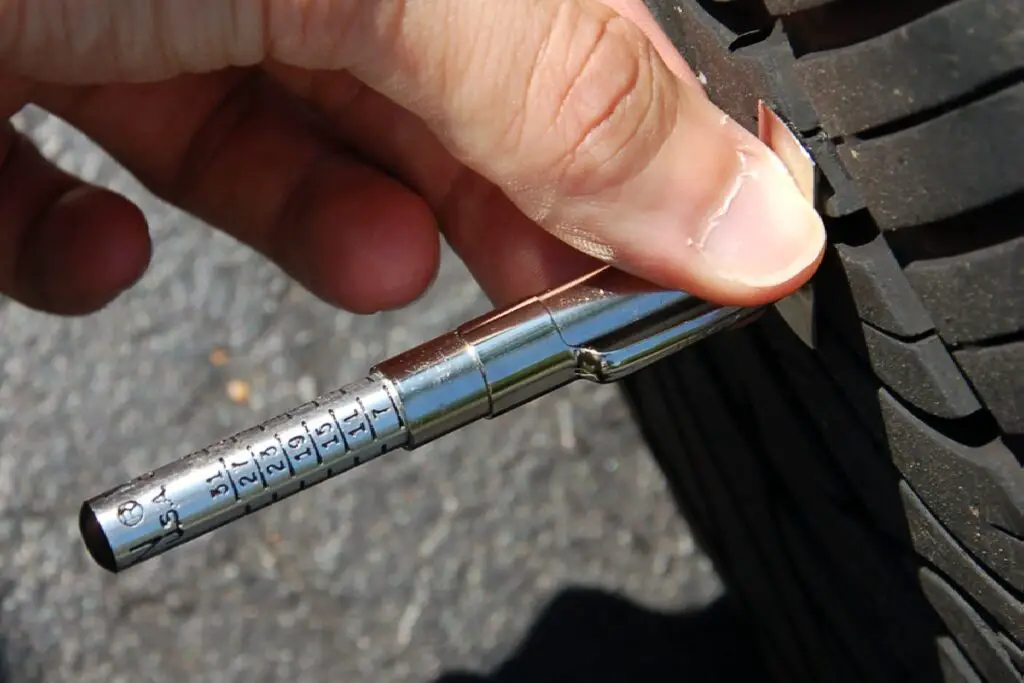
How to know the age of a tire
How long do tires last on a car? To determine the age of a tire, you can decode the DOT code found on its sidewall. The DOT code consists of a series of numbers and letters.
The last four digits usually indicate the manufacturing date. For example, if you see “2319” in the code, it means that the tire was manufactured in the 23rd week of 2019.
Identifying Signs of Aging Beyond the DOT Code
While decoding the DOT code is helpful, there are other signs that can indicate tire aging. Look for cracks or dry rot on the sidewalls or tread.
Bulges or bubbles may also appear, which could be a sign of internal damage. If your tires have reached their maximum recommended mileage or have become excessively worn, it’s time to consider replacing them.
Why Knowing the Age of Your Tires is Important for Safety
Knowing how long your tires have been in use is crucial for safety reasons. As tires age, their rubber compounds deteriorate and become less effective at gripping the road.
This can lead to reduced traction and increased stopping distances, especially in wet conditions. By keeping track of their age and condition, you can ensure that your tires are safe and reliable.
Tips for Purchasing New Tires with a Recent Manufacturing Date
When purchasing new tires, it’s best to choose ones with a recent manufacturing date to maximize their lifespan. Here are some tips:
- Check the DOT code on each tire before making a purchase.
- Look for codes ending in higher numbers (e.g., 5019) as they indicate more recent manufacturing dates.
- Avoid buying tires that have been sitting on store shelves for an extended period.
By following these tips, you can ensure that you’re getting fresh tires with plenty of life left in them.
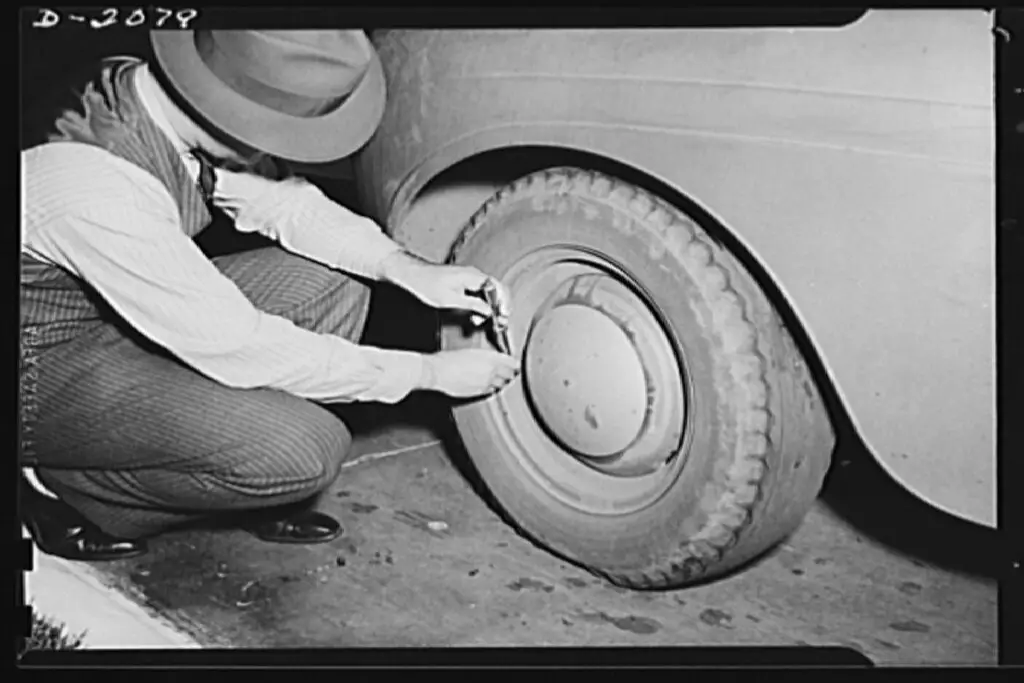
conclusion
How long do tires last on a car? Understanding the lifespan of your car’s tires is crucial for maintaining safety and maximizing their longevity. Various factors can affect tire lifespan, such as driving habits, road conditions, and regular maintenance.
By estimating tire lifespan based on kilometers or miles driven, you can plan ahead for replacements.
To extend the life of your tires, it’s essential to follow proper maintenance practices like regular rotation, alignment checks, and maintaining proper tire pressure.
Knowing the signs that indicate it’s time for new tires will help you stay proactive in ensuring your vehicle’s safety.
When choosing new tires, consider comparing seasonal options based on your specific driving needs and climate conditions.
Opting for high-quality tires from reputable brands can significantly impact their longevity.
It’s also important to know how to determine the age of a tire to ensure you’re not purchasing old stock that may already be compromised.
To ensure you make informed decisions regarding tire maintenance and replacement, consult with automotive experts or refer to trusted sources such as manufacturer guidelines or professional mechanics.
FAQs
1. How often should I rotate my car’s tires?
Regular tire rotation is recommended every 5,000 to 7,500 miles (8,000 to 12,000 kilometers) or as advised by your vehicle manufacturer.
This practice helps promote even wear across all four tires and extends their overall lifespan.
2. Can I replace only one tire at a time?
While it may be tempting to replace only one worn-out tire instead of a full set due to cost concerns, it is generally advisable to replace all four tires simultaneously.
This ensures balanced traction and handling characteristics across all wheels.
3. What are some signs that my car needs an alignment?
Signs indicating the need for an alignment include uneven tread wear on your tires (such as excessive wear on one side), pulling or drifting to one side while driving straight, or a crooked steering wheel when driving straight ahead.
4. How can I check my tire’s tread depth?
You can use a tread depth gauge or the “penny test” to check your tire’s tread depth. Insert a penny into the groove of the tire with Lincoln’s head facing down.
If you can see all of Lincoln’s head, it indicates that your tire’s tread is worn and needs replacement.
5. Are there any specific tires for snowy conditions?
Yes, there are winter or snow tires specifically designed for improved traction and handling in snowy or icy conditions. These tires have unique tread patterns and rubber compounds that enhance grip on slippery surfaces.
It is recommended to switch to winter tires if you frequently encounter such conditions during the colder months.
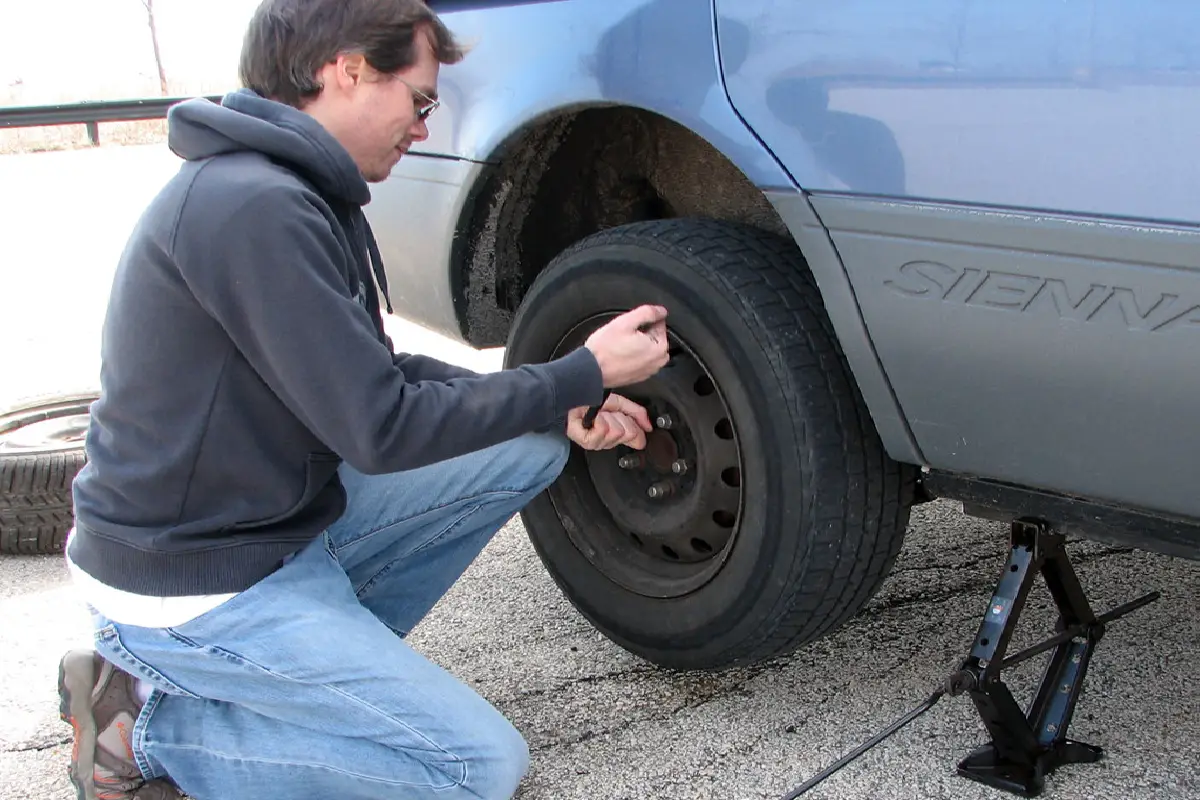

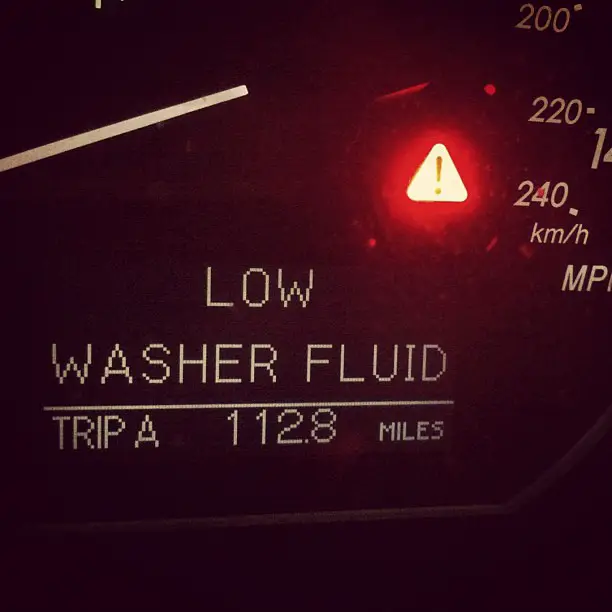

Leave a Reply